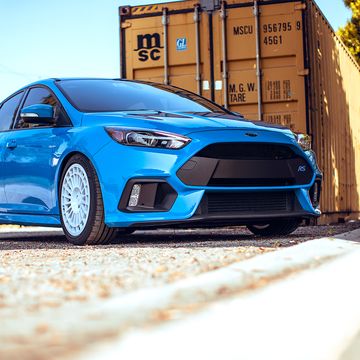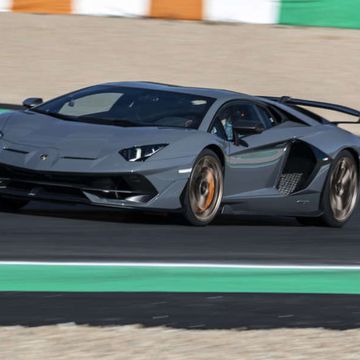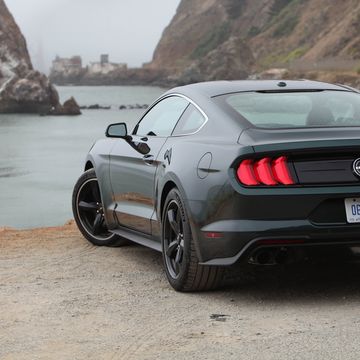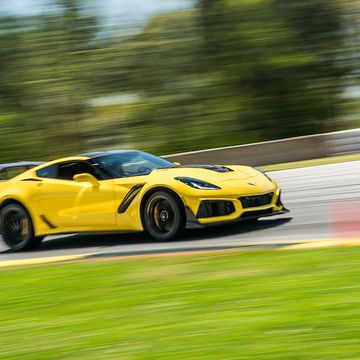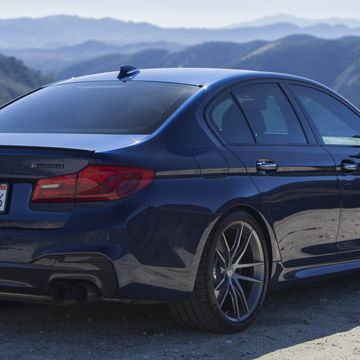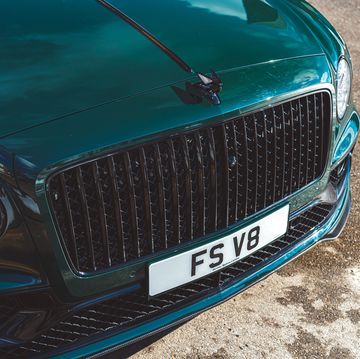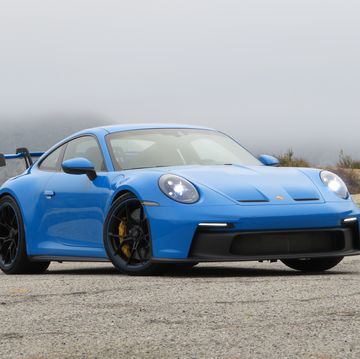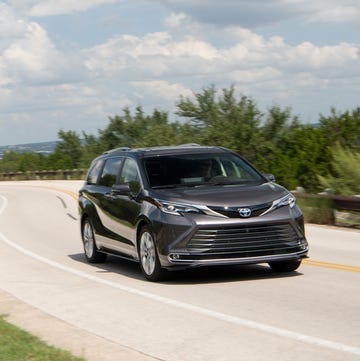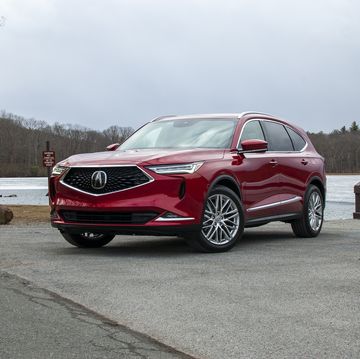In the latter half of the 1990s, all German automakers learned the same thing: you can’t build cars designed to last forever, and still make money. The changing tide could be seen in the product lineups from those companies, but none so prominently as at Porsche. The 993-era cars, 1995 through ’98, were the last “real” Porsches, some purists will say. And if the 993 wasn’t the last real one, it’s certainly among the most desirable for today’s 30-50 year olds, with an honest durability about them; a timelessness. But even peak 90’s Porsche durability was built to a price, on some kind of reasonable budget.
Guntherwerks CEO Peter Nam poses the question, standing in front of his first car, the outrageous 400R: “What if you had a 993 where every single possible thing was the best, highest quality it could possibly be, using technology available today, cost be damned?”
You’d end up with, frankly, exactly what we have here. You can see it’s different, but can’t say why, at first. Then you look closer, and realize that, wow, this is not a normal modified 911, at all.
You start with a 1995-1998 Porsche 993-era 911, and completely disassemble it down to the bare chassis. Nearly all of the steel bodywork is thrown out; only the doors remain, and the rest is all carbon fiber panels, made in house. On this first car, the sunroof was deleted in the process as well. Wait, in-house carbon panels? How do they do that? You may have heard of Nam’s other company, Vorsteiner, a maker of carbon fiber body kits for exotic cars.
The interior is completely re-created and modernized, with carbon fiber bucket seats, a futuristic-looking fire bottle (from an M4 GTS!), Porsche’s own GPS/MMI system with lightweight speakers and amplifiers in carbon housings, and a stunning set of in-house billet-bezeled gauges. The cockpit is spacious, beautifully lit, and comfortable, just like a 911 should be, and covered in alcantara and houndstooth fabrics. Even the floor mats in this model are quilted, tufted leather. “You can save 10 lbs with our optional carbon fiber floor mats, but I like these,” Nam tells me. This example has the carbon-paneled rear seat delete kit as well, though you can specify retaining rear seats in your own 400R.
Although one screw holding on a speaker cover wiggles itself loose during my 3 hours with the car, I am, frankly, shocked at the build quality, especially considering the relatively short eight-month development cycle. This car feels expensive and complete to the touch, even for, what Nam reinforces several times over, is a pre-production prototype.
An Aside:
The naturally-aspirated air-cooled engines used in the 911, for those unfamiliar, offer one of the worst horsepower-to-dollar ratios available from any engine, anywhere. Here’s a rough breakdown for you, in terms of engine horsepower vs. how much it costs to get there once you supply a working engine:
330 HP / $40,000
385 HP / $50,000
430 HP / $100,000
So, for the cost of a clean, complete 997 GT3, two sets of tires, and a year’s worth of track days, you could have an air-cooled engine, by itself, on a stand, that makes as much power as a junkyard LS out of a crashed Camaro. Just to put things in perspective.
The 400R comes with one bad mother-you-know-what of an air-cooled engine, sourced from well-respected engine builder Rothsport Racing.
Rothsport’s four-liter monster isn’t just powerful; it’s stunning to look at. Making a verified 431 Horsepower and 330 lb/ft at the crankshaft, it features Mahle pistons, twin spark Motec Engine management, coil over plug ignition, individual throttle bodies, a carbon fiber plenum, and a billet crankshaft. The entire engine is balanced, blueprinted, color-matched to the exterior paint, broken in and tested on Rothsport’s engine dyno before installation. The Motec ECU features a functional “Sport” mode with a valved exhaust, the first this author is hearing of such a system on a roadgoing air-cooled car.
With the exhaust closed, in “Normal” mode, it’s only very slightly louder than a standard Carrera RS of the period, so you won’t wake the dead. It only makes 400 horsepower in normal mode, and the response is muted a bit along with the exhaust, but normal-level conversation, or listening to talk radio, is possible. With Sport enabled and the valve opened, you get a booming, husky, snarly, glorious bark as the engine comes on cam over 4,500 RPM. It’s not piercing the way a modern water-cooled Cup Car is; it’s just the smoothest, mechanical rasp with a hint of bass. You can feel the balance, as no vibrations from the engine come into the car. You want to have the windows down, no matter the weather.
Normally, I’d be the guy who says “leave it in Sport” all the time, but unfortunately, there’s a minor drone from 1,800 to 2,100 RPM with the exhaust open, which would get tiring in daily use, so both modes would be in full effect. When you’re on it, you’re never below four grand and it matters, not.
Porsche horsepower isn’t really like other horsepower. First off, 911s only have about 11-13 percent drivetrain loss, compared to the 15-20 percent you see in RWD or AWD cars. Secondly, that engine is over the drive wheels at the back, and 911s are generally very low and very light. The 400R is no exception. See the photos? It’s nice and low. It comes with hydraulic nose lift so you can clear basic objects. As for light? It’s 2,660 lbs, wet.
Let me repeat that, in case it didn’t quite stick: two thousand, six hundred, and sixty pounds. In a car with a full interior, a stereo, (electric!) air conditioning, power steering, ABS, and tufted leather floor mats. The donor car on which the 400R is based, left Stuttgart weighing 3,020 lbs. Nam tells me his team meticulously combed through the 993 to cut weight wherever he could, but without sacrificing the build quality or luxury that you’d expect from a genuine Porsche RS product. He has succeeded. The fit and finish of the carbon hood, trunk, roof, fenders, and bumpers (the front modeled loosely after the Carrera GT) is spot on, and the signature Porsche door thunk remains. The paint is a million miles deep, and the fit and finish of the interior is excellent, if not an attempt to replicate the factory look. The gauge bezels, center console, and buttons for Sport and Nose Lift are very nice, but they are a hint of Orange County in a sea of Stuttgart.
And then there’s the chassis. “It was always engineering before styling with this car,” Nam tells me. “It looks the way it does, for the most part, because that was how it has to look to perform the way it does.” And how it looks, is square. Meaning, the track of the car, like all the great Porsche racecars, not to mention the 959, and unlike the standard 993 road cars, is squared up. The front and rear track widths, measured at the center of the tire, are a matching sixty-three inches wide. Compare to the rear track width of Porsche’s newest 991 GT3 RS: 62.6 inches. Square track does not mean square stance, which is dictated by weight distribution, and the 400R rides on 245-section Michelin Pilot Super Sport tires in the front, and 315’s in the rear. But to anyone familiar with racecars, the more corners in your racetrack, the closer to square you want the car’s track.
Fortunately, you don’t have to re-invent the wheel to make this system work, you only have the best guy around to fine tune it: Joey Seely of Emotion Engineering, with a background in endurance racing, Pike’s Peak, and some of the world’s fastest street, track and runway Porsches. By using the donor 993’s existing “motorsport” suspension mounting points, KW Clubsport coilovers, solid bushings and modified drop links, swaybars, and uprights, the 400R turns in nearly as hard as a brand new GT3 RS, and with electric power steering, long, intense canyon runs, such as the one this author enjoyed, are no more physically demanding than in a modern car. The ride too, was shockingly good; especially considering this development car is using a $3,500 set of street-tuned coilovers, not a $15,000 set of Moton’s. It reinforces the point that you don’t need a particularly outrageous set of hardware if you have the right fine-tuning. Seely notes, however, that “the crazy race shocks will be available too, if you want those. But the car really doesn’t need them. The gains are very incremental.”
I cannot possibly recall the number of times I’ve been in a position to review a resto-mod type car and been told by the owner something to the effect of, “It drives like a brand new car now,” which is obviously complete horseshit 99 percent of the time. Your Morrison-chassis-equipped, LSX powered, Ohlins-damped ’69 Camaro may be fast enough to generate the autonomous poo function, and may be able to keep up with a 2018 Camaro SS around a road course, but only a liar or a fool would argue that the old car now drives like the new car.
This is the one percent. I’m not here to say the 400R drives like a brand new RS, but with the revised rear suspension geometry, square track width, finely tuned dampers, and electric power steering (sourced from 993-era Porsche racing cars), it doesn’t feel remotely like a standard 993, either. The 993, when it was new, was old. It was out-of-date then, but its honesty, solid-quality, and analog feel is what’s kept the spirit of those cars going. This car feels nothing like that.
First off, it’s fast. Like, really fast. We don’t have instrumented tests to go on, but with only 6.17 pounds-per-horsepower to push around, compared to the current GT3 RS’s 7.0 lbs/hp, by far the hold back is manual shift times. In gear, on the floorboard, the 400R goes like hell.
The Rothsport motor, in what is described to me as an “almost-final” state of tune, has a true duality, which it exhibits on either side of 4,500 RPM. It makes good torque, so it’s no big deal to putter around at low RPM’s while maneuvering or creeping along for photo shoots, with no big cams, fuel smells, smoke, or hesitations. But it’s not really anything special until it finds its happy place, between 5,000 and 7,800 RPM. Crossing 4,500 RPM and feeling the engine come on cam gives the driver an instant “A-Ha!” sensation, with the conscious desire to keep the engine on boil as long as possible. And this car’s got legs with a fully-built and custom ratio’ed six-speed gearbox. You can run the entire length of Angeles Crest Highway, all 54 miles of it, in third gear, and walk away from most normal sports cars while doing so. Like Tin Cup qualifying for the Open with a 7-Iron, I’d be shocked if you couldn’t cross into the 1:40’s at Laguna in this car, using only third gear. The balance of the engine means almost zero engine vibrations travel into the cabin, resulting in the confidence to keep the tach pegged in the top quarter of the range for sessions of 20-30 minutes at a time. It never feels tired. It never feels beaten on. It doesn’t get hot. It never asks you to stop.
It turns in hard, like, as hard as a new GT3, or as hard as my Mustang track car, which wears front tires 50mm wider than the 400R. Even though the ratio is, apparently, unchanged from standard 993 hardware, somehow, you only need half as much steering to go into any corner as you did before. Only true hairpin corners require shuffling your grip on the meaty, three-spoke wheel.
In a football field-sized, paved turnout, I was able to provoke mild amounts of both understeer and oversteer at will, at ‘autocross’ speeds. I wasn’t prepared to write a check my body couldn’t cash by trying to slide the one existing prototype like Chris Harris, but let’s assume it’s doable. The 400R has no traction or stability control of any kind, although the massive Brembo braking system does feature ABS. It has boatloads of mechanical grip, so you really have to be flying to get it to break loose.
The great thing about going back to a naturally aspirated powerplant, after years of being used to twin-turbo V8 exotics, (and driving to the test in a modified, turbocharged Focus RS), is how manageable it all feels. 431 HP in a 2,660 lb, unassisted, manual transmission car seems like an intense proposition for most folks, but the truth is, the limits of this car can be approached linearly over the first few hours of driving. It inspires confidence. It’s extraordinarily fast, but doesn’t do anything you don’t tell it to do. It absorbs and minimizes mid-corner bumps. The power builds in a way that’s predictable, not in some massive, frightening wave of turbocharged torque. You won’t just blow the tires off in third gear, the way you can in a McLaren 570S or Ferrari 488GTB, but that’s a compliment, not an insult. The 400R is a supercar, but it’s also a momentum car, which rewards corner entry speed with outrageous corner exit speed.
By the end of my drive, I even started to get a little too comfortable. It got a little too easy. A good driver will be able to get the most out of this car, for sure. It talks to you in a way that good drivers can understand. It communicates what it wants through your feet and hands; it tells you that you can, really, push it harder. Vintage cars keep you on your toes. But the 400R isn’t like other vintage cars. It’s so easy that it lets you get distracted. Your mind can wander, just like it does in a new car, while your hands and feet practically autopilot the 400R down a road at a speed that will absolutely land you in jail, if not sail you right to the bottom of a cliff if you’re not paying close attention. In the 400R, you need to be driving.
It starts at $525,000, which... yeah, I know. This one, marked #0/25, would sell for $575,000, as configured. Depending on what the customer wants, they could spend up to $750,000, on what, I’m not sure, but a 500-horsepower Air-Cooled engine could be $200k by itself. And the first 25 customer cars are all sold.
What it costs doesn’t matter in the least. According to company founder Peter Nam, “The people who ask what it costs don’t actually buy them. They scoff. The people who become customers ask about the engine, what kind of colors and fabrics they can get. Even if they ask about the price, it’s not until the end. But generally they don’t ask at all. They just see it, hear about the engineering, go for a ride and want it.”
So lets establish that value is neither a question nor an answer, when it comes to the 400R. There is no cross-shopping. There is no “would you rather,” because a 400R customer answers, “would you rather?” with “Both.” There are 25 people out there who came, saw, and wanted. If I had to guess, some may have paid in Bitcoin.
Now, for the inevitable comparison to Singer Vehicle Design’s “Reimagined” 911:
As someone who has sat in, but not driven one; who knows the designers and the ethos and what goods and materials cost, but who has not, as of this writing, experienced one mechanically, I can’t quite say. But, according to both representatives of Singer and Nam himself, there are enough customers out there for two low-volume, next-level 911 distillers in the world; a sentiment I agree with. Especially when that hypothetical “which would you choose?” argument isn’t actually in reality.
If your idea of the perfect 911 looks like one from the 60’s, and has a year’s college tuition worth of woven Italian leather filling the cockpit, then you may want to call up Singer. If your idea of the perfect 911 looks like something from the 90’s and features motorsport-grade engineering, daily usability, comfort, speed, quality, and the ability to run nose-to-tail with a modern GT3 RS in an air-cooled, manually shifted, analog package, Guntherwerks would like you to come take a test drive. Nam is confident it has the best of everything and the driveline is engineered to take a hundred thousand miles of trouble-free hard driving. What could be more 90’s German than that?

















